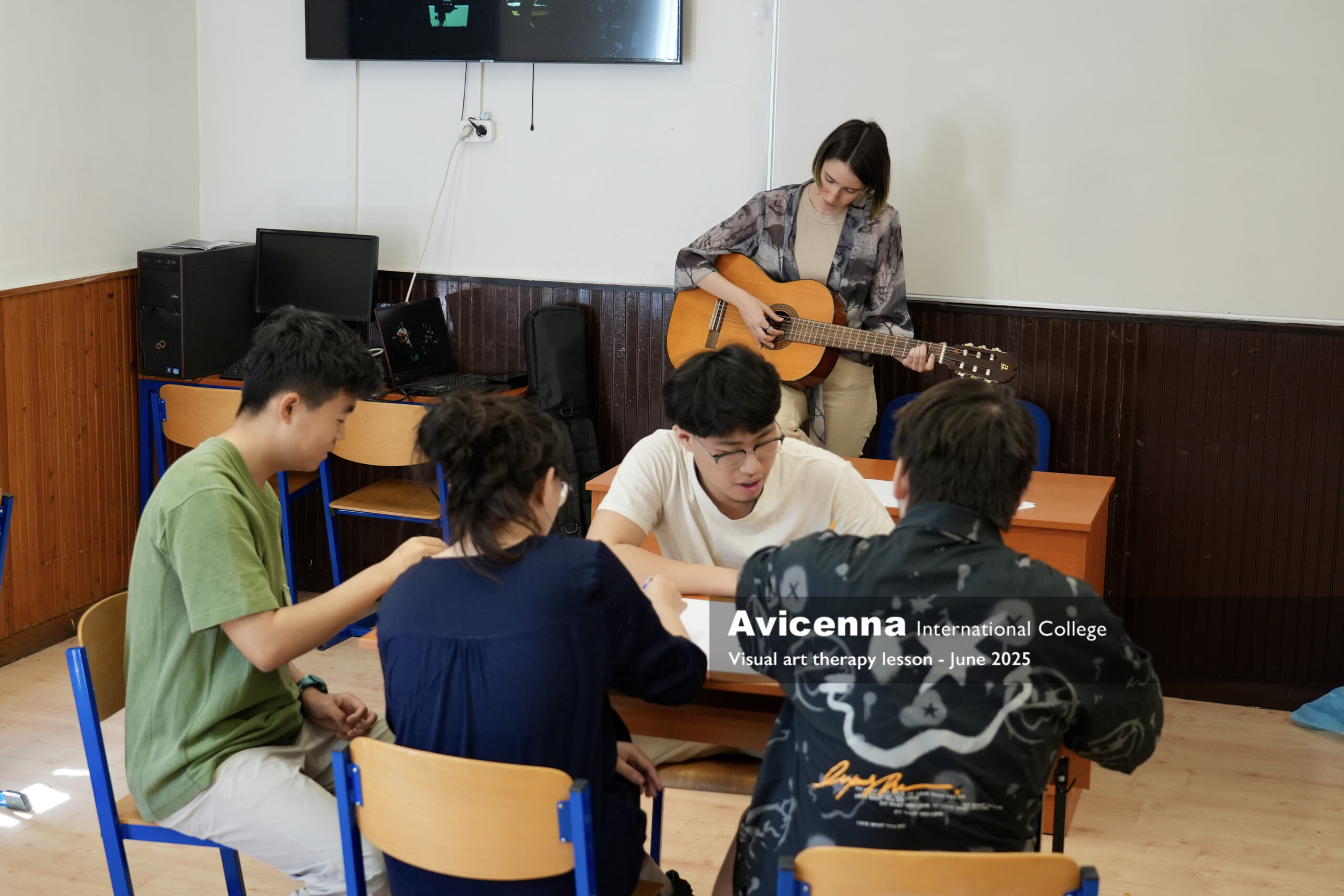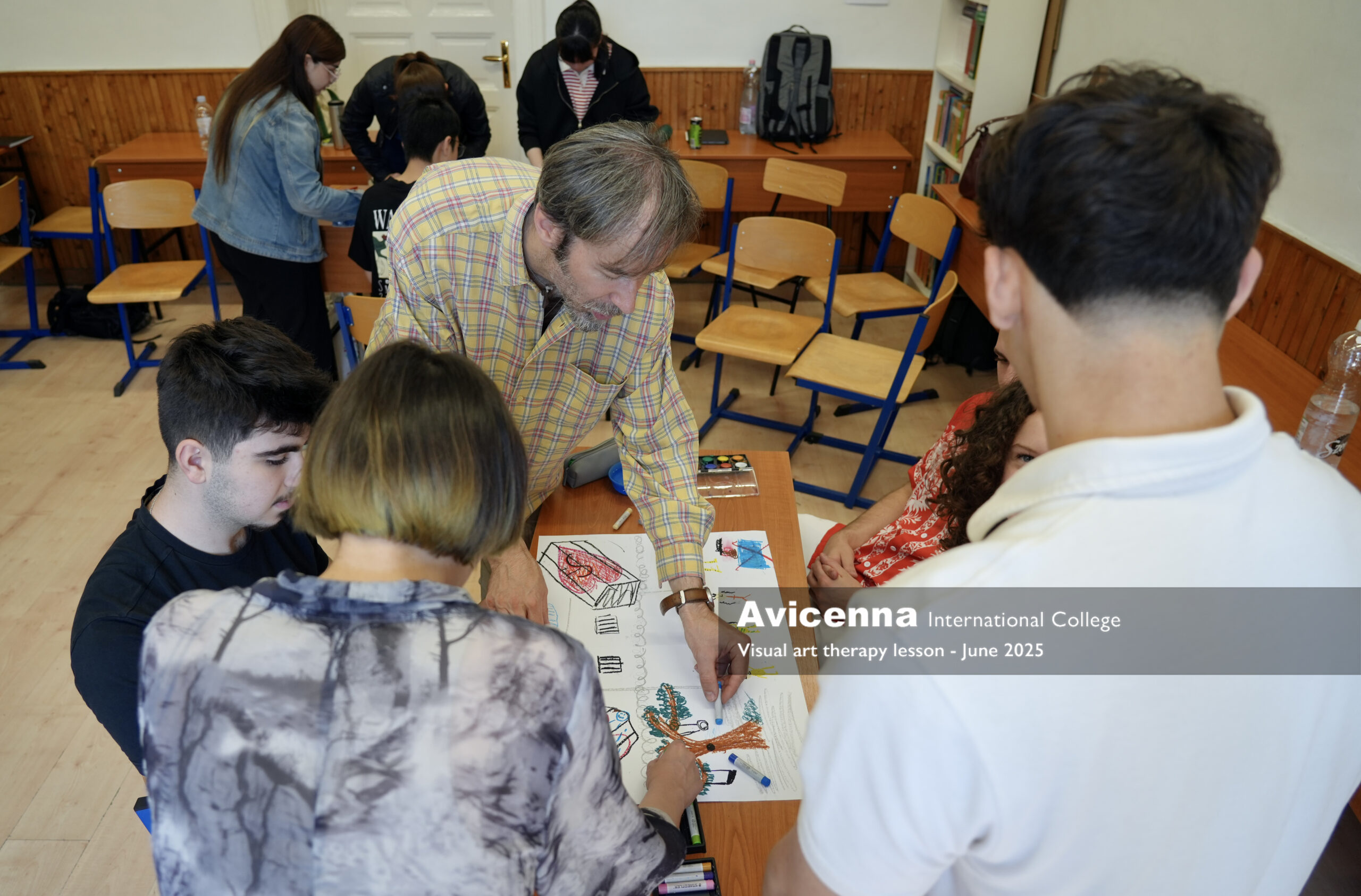Music and Art Therapy lesson debut at AIC
written by Laura M.
written by Laura M.
The practice of therapy through different forms of art is not a new concept, and it is certainly important for people of all ages. While focusing on mundane tasks, people often forget about their emotional needs. The forms of expression we choose in our daily lives define much more in our lives than we might think. In order to be balanced and healthy individuals, we need to care not only for our own well-being but also for those around us.

Words can often be difficult to use as an outlet for authentic self-expression. This is especially true for neurodivergent individuals, children who have been abused or experienced trauma at a young age, and the elderly, some of whom may suffer from illnesses such as Alzheimer’s or dementia. Numerous studies have shown how music and art therapy can improve the lives of those mentioned above, as well as human beings in general.

Nowadays, I have noticed that many children and young adults struggle to express themselves, particularly when it comes to articulating their feelings. This is why I have tailored some of my classes to help them express their ideas openly. I strive to teach them that there is no shame in being vulnerable. Vulnerability takes courage and should be applauded. I was pleasantly surprised during one of my classes when I gave students the task of writing lyrics in small groups. I then brought their creations to life by accompanying them on the guitar as they sang or rapped their lyrics. It was such a freeing experience for everyone that I wanted to show them how combining different forms of art could lead to similar and wonderful outcomes.

First Class and Exercise with Grade 9:
The students sat in a circle, facing each other. Some of them drew printed segments of various poetry, both in English and Hungarian, from my lucky Dutch hat. I let them choose whichever language they felt most comfortable with. Their task was to read the segments while depicting three different emotions: happiness, sadness, and anger. These could become more nuanced, depending on each individual’s creativity.

Other students were tasked with expressing the poetry through movement or dance, through music by singing melodies or tapping rhythms to match the mood, or through abstract brushstrokes and lines on a large piece of paper placed in the middle of the room. This was done in groups of three or four. I tried to encourage the more nervous students who volunteered to read, and I demonstrated different types of movement to help them convey emotions. I also played chords on the guitar for those who wanted to accompany the poetry with song. The art teacher provided supplies and offered support and guidance to students working with drawing materials. It was a difficult exercise for many of the students, and I had to gently push several of them just to complete the minimum. However, I was proud of those who still made the effort to participate, and for some, even trying was a meaningful step forward.

Second Class and Exercise with Grade 10:
The students were divided into three groups and sat around three tables, each with watercolors, grease paint, and a large sheet of paper. Their task was to paint a story or express raw emotions that came to mind while listening to music.

The music I selected had a specific purpose. The first track was from the movie Ruben Brandt, which features beautiful compositions paired with an imaginative world inspired by Picasso’s style. Before beginning their work, the students watched a scene from the movie where a live performance of Kis Kece Lányom by Ferenc Snétberger and Richard Bona plays in the background.

The second clip was from the heartwarming film Loving Vincent, which was hand-painted by 125 professional oil painters. The film includes 65,000 frames and features over 120 of Vincent van Gogh’s paintings. The accompanying track was The Night Café by Clint Mansell.

Finally, I played a piece that highlighted the fusion of different cultures, specifically Indian and European. The piece, Mirror, is from the composition My Sister’s Voice by Reena Esmail.

The art teacher circulated among the students, helping them explore ways to incorporate elements of the featured artists’ styles into their own work. We both made sure that everyone was comfortable, engaged, and moving in a creative direction throughout the lesson.


I hope these classes serve their intended purpose in the long run, and that the students will remember some of these exercises when they face the inevitable hardships that life brings.

Written by: Laura Milisavljevic
06. Jun. 2025

